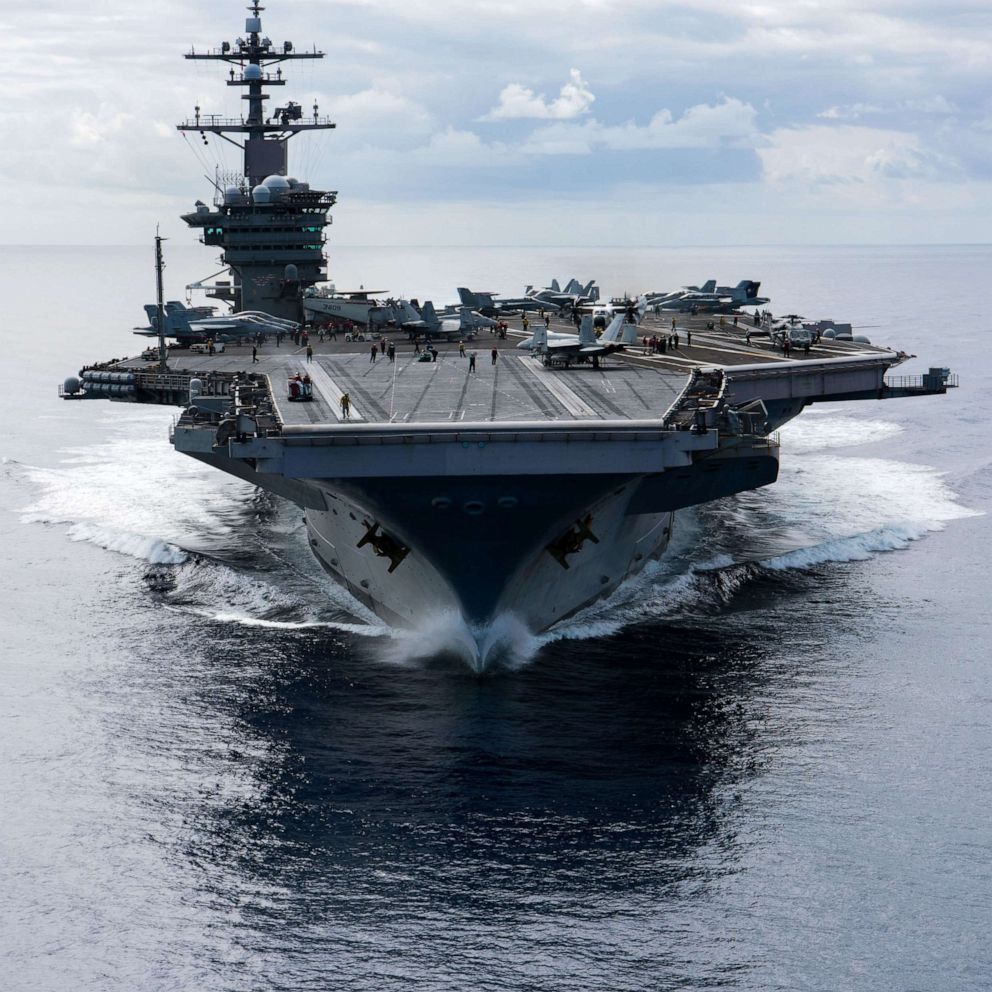In the latest show of force against Iran and Yemen’s Houthi rebels, the United States has deployed at least six nuclear-capable B-2 bombers to a base in the Indian Ocean within striking distance of both countries, an ABC News analysis of satellite images shows.
The buildup of aircraft on the island of Diego Garcia – comprising at least one third of the Air Force’s stealth bombing fleet – accomplishes three tasks with one strategic move, increasing the United States’ military presence in the region, enabling continued strikes of targets in Yemen and sending a message to Iran, experts told ABC News.
Satellite imagery from Planet Labs PBC analyzed by ABC News shows at least six B-2 bombers on April 1 on the runway of Naval Support Facility Diego Garcia, a British naval base leased to the U.S. on a remote island in the Indian Ocean. The aircraft were not visible in images taken on March 25, but by March 29, at least four planes were visible on the tarmac.

“The movement of the aircraft to Diego Garcia definitely sends a signal to Iran about the extent to which they are in jeopardy, and the extent of seriousness the Trump administration feels with regard to its various demands,” said Daryl Press, the director of Dartmouth College’s Initiative for Global Security.
The Pentagon announced Tuesday that it is rapidly expanding its footprint in the Middle East by sending the USS Carl Vinson — an aircraft carrier capable of launching fighter jets — to the region in addition to the USS Harry S. Truman carrier strike group, as Trump has escalated his rhetoric on Iran. Trump on Sunday threatened “bombing the likes of which they have never seen before” if Iran continues supporting Houthi rebels in Yemen and refuses to wind down their nuclear program.

“If they don’t make a deal, there will be bombing,” Trump said in a telephone interview with NBC News on March 30, one day after the aircraft begin to amass on Diego Garcia. “It will be bombing the likes of which they have never seen before.”
In total, the U.S. operates 20 B-2 bombers, long-range stealth bombers that cost more than $1.1 billion per plane, according to the U.S. Air Force. At least six B-2 bombers are visible at Diego Garcia from the satellite imagery ABC News reviewed.
“Additional squadrons and other air assets that will further reinforce our defensive air-support capabilities” have been deployed to the region, the Department of Defense said in a statement announcing the move, but DOD officials would not confirm whether that was a reference to the deployment of the B-2s to Diego Garcia. It remains unclear whether the B-2s have been used to carry out airstrikes against Houthi targets inside Yemen.
“In the past, the kinds of build-ups in the region could usually be seen as defensive, or demonstrative. This many B-2s signals an unprecedented offensive intent and capability,” said ABC News aviation contributor Col. Steve Ganyard.
The movement of the B-2s to the Indian Ocean expands U.S. capability in the region by allowing it to hit targets repeatedly with a shorter re-fueling window for the aircraft, according to Press.
The B-2s bring a “truly unique capability” to the U.S. military by marrying the ability to carry heavy bombs — including bunker busters capable of potentially damaging Iran’s heavily fortified nuclear enrichment sites — with the ability to fly undetected by radar, Press said.
“I would expect that B-2s could operate over any Iranian air defense at minimal risk, with the caveat that countries all around the world are constantly innovating and sharing technology to try to locate, track and destroy these aircraft,” Press told ABC News.
The visibility of the six aircraft is likely intentional to send a message to Iran, according to Press, who noted that the U.S. Air Force has the ability to launch long-range bombers from the continental United States. Moving the bombers to the Indian Ocean nominally increases the military’s striking power while delivering a message to Iran and the Houthis.
“Simply because the movement of bombers is a signal, doesn’t mean that it’s a bluff, in the sense that the same show of force which has the effect of coercing Iran also is a preparation for the use of force, if it comes to it,” Press said.
The movement of B-2s appears to align with the broader strategy of moving military assets into the region to strengthen the United States’ position, according to Dana Stroul, Research Director at The Washington Institute for Near East Policy and former Department of Defense Deputy Assistant Secretary of Defense for the Middle East during the Biden administration.

“What they’re doing is a whole series of posture increases across the Middle East to reinforce Trump’s stated willingness to use military force should diplomacy fail.” she said.
Iran’s Supreme Leader Ayatollah Ali Khamenei said this week vowed a “strong and reciprocal blow” if the United States strikes Iran first. Iran’s foreign minister said Iran is willing to engage in indirect negotiations with the U.S. after the Trump administration sent Iran a formal letter earlier this month requesting to restart diplomatic engagement with the country.
Trump pulled out of the Joint Comprehensive Plan of Action, the JCPOA also known as the Iran nuclear deal, during his first term in office. The JCPOA, negotiated during the Obama administration, was designed to limit Iran’s development of nuclear weapons. Since re-taking office in January, Trump has tried to re-engage Iran in diplomatic talks over their nuclear weapons development, threatening military escalation if diplomacy is not achieved.
“Nobody in the region wants more war, and the challenge with the United States using military force against Iran is whether or not it can be contained…or whether this escalates to World War III in the Middle East,” said Stroul.

